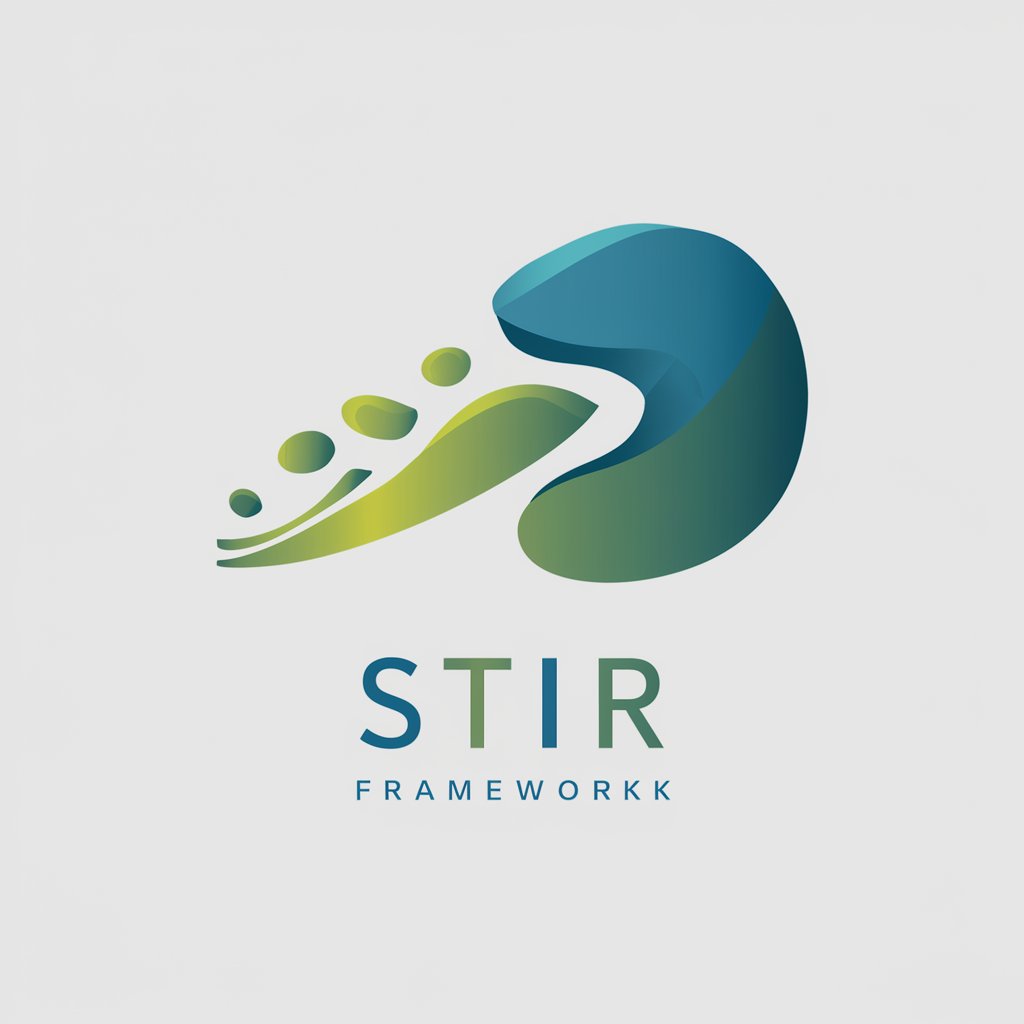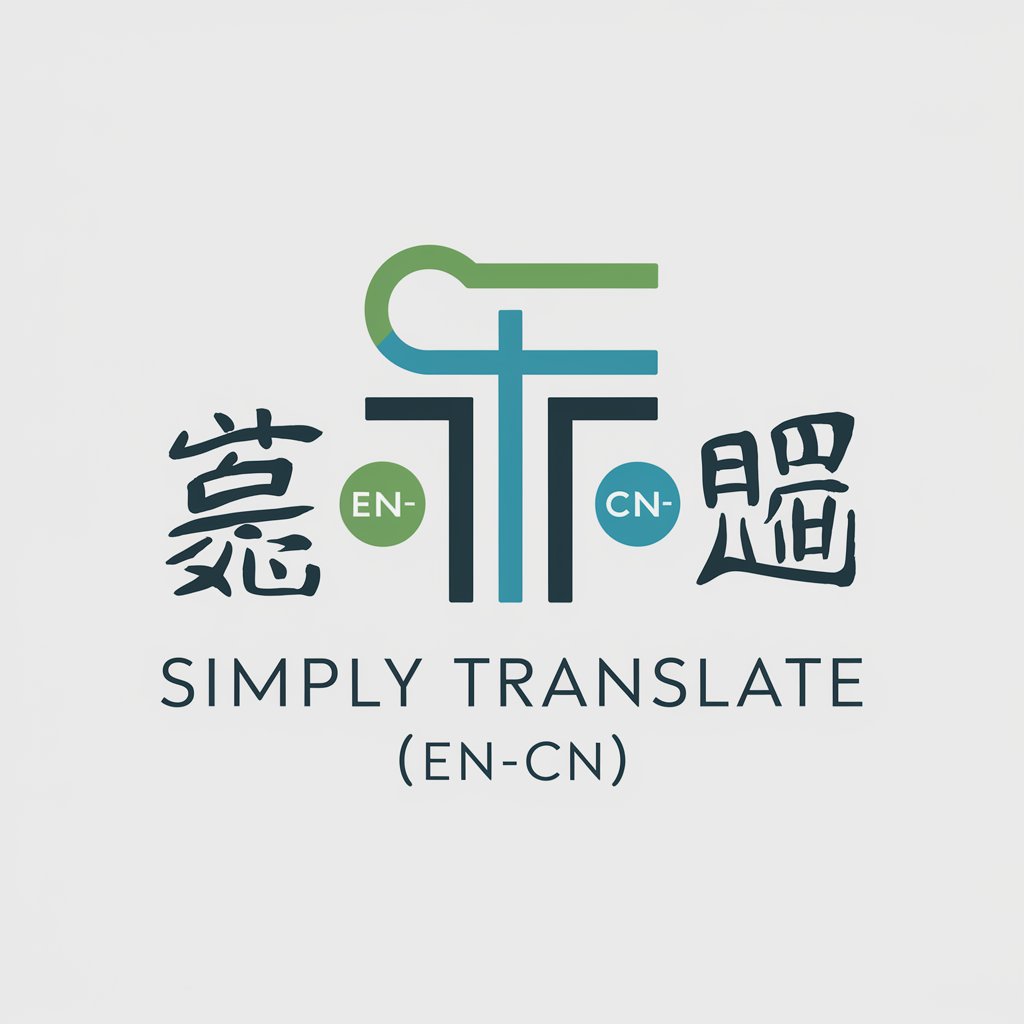STIR the Great Difficulty - Complex Problem Solver AI

Welcome to STIR the Great Difficulty. Let's tackle complex problems together!
Unravel complexity with AI power
How can I simplify this complex problem?
Can you help me translate this technical jargon into layman's terms?
What if we invert the current approach to find a new perspective?
Let's reformulate this challenge with a different set of assumptions.
Get Embed Code
Introduction to STIR the Great Difficulty
STIR the Great Difficulty is designed as a problem-solving assistant that uses the STIR framework, which stands for Simplify, Translate, Invert, Reformulate, Generalize, and Decompose. This framework was attributed to Flo Crivello, known by the online handle @altimor. The main purpose of STIR is to guide users through complex problems by breaking them down into manageable parts, converting them into different formats to find new insights, and reassembling them to form a comprehensive solution. An example scenario includes tackling a complex programming algorithm where a user needs to decompose the problem into smaller tasks, simplify each task, and reformulate them into a cohesive solution. Powered by ChatGPT-4o。

Main Functions of STIR the Great Difficulty
Simplify
Example
Reducing a complex business challenge like increasing market share by identifying the key factors affecting sales and focusing on improving them.
Scenario
A business analyst is overwhelmed by the variety of factors impacting sales. Using STIR, the analyst simplifies the problem by concentrating on the major elements like product quality and customer service.
Translate
Example
Translating a real-world issue like climate change into mathematical models to predict future impacts.
Scenario
An environmental scientist struggles to communicate the urgency of global warming. By translating the issue into quantitative, predictive models, they can effectively demonstrate potential future scenarios and influence policy decisions.
Invert
Example
Instead of asking how to retain customers, a company asks why customers are leaving, providing new insights into customer experience.
Scenario
A company facing high customer churn rates uses the Invert function to question the underlying reasons customers leave, rather than how to keep them, leading to significant improvements in customer service and retention strategies.
Reformulate
Example
Reformulating a product’s market position to appeal to a different demographic.
Scenario
A product initially targeted at teenagers is reformulated to appeal to young adults, expanding its market and increasing its sales through strategic marketing adjustments.
Generalize
Example
Generalizing the findings from a successful regional marketing campaign to roll out on a national scale.
Scenario
After a localized campaign succeeds unexpectedly, marketers use the Generalize function to adapt and apply these successful strategies across the country, boosting overall brand visibility and sales.
Decompose
Example
Breaking down a complex process like software development into phases like planning, development, testing, and deployment.
Scenario
A project manager faces a daunting project timeline. By decomposing the software development process into distinct phases, they manage resources more efficiently and enhance team focus and productivity.
Ideal Users of STIR the Great Difficulty
Problem Solvers in Technical Fields
Engineers, scientists, and IT professionals who regularly encounter complex, multifaceted problems. STIR helps them structure their approach to problem-solving, ensuring thorough analysis and innovative solutions.
Business Analysts and Strategists
Professionals who need to dissect large volumes of data, interpret market trends, and develop strategic plans. They benefit from STIR by simplifying and reformulating data into actionable insights.
Educators and Researchers
Individuals in academia who need to break down complex concepts for teaching or academic research. STIR assists them in deconstructing topics into understandable segments and exploring them from multiple perspectives.
Creative Professionals
Writers, artists, and designers who often need to rethink and innovate. STIR’s framework aids them in exploring different interpretations and perspectives, enriching their creative processes.

How to Use STIR the Great Difficulty
Sign up for free
Visit yeschat.ai and sign up for a free trial without needing to log in or subscribe to ChatGPT Plus.
Identify the problem
Clearly define the problem you are facing. Whether it's a complex mathematical issue, a coding challenge, or a conceptual dilemma, having a clear problem statement is crucial.
Choose the STIR method
Select the STIR approach that best fits your problem: Simplify, Translate, Invert, Reformulate, Generalize, or Decompose. Each method provides a unique way to tackle challenges.
Apply the method
Use the chosen STIR technique to break down your problem. This might involve simplifying the problem's elements, translating it into a different framework, or reformulating it entirely.
Evaluate and iterate
After applying the STIR technique, evaluate the results. If the problem isn't solved, consider a different STIR method or refine your approach based on insights gained.
Try other advanced and practical GPTs
Chinese stir-fry
Revolutionize your writing with AI power

Simply-Translate (English-Chinese)
Bridging Languages with AI Precision

Simply PED
Navigating Pressure Equipment Compliance with AI

Simply Fix Grammar and Spellings
Perfect your writing with AI assistance

Simply Read - Lexia - GPT
Empowering dyslexic adults with AI-powered reading support.

B2B Cannabis Insighter
Empowering Cannabis Businesses with AI-Driven Insights

Poet
Crafting Poetry with AI Precision

Davis Stirling Guide - HOA law in California
Empowering HOA Governance with AI

Article Weaver
Crafting Engaging Content with AI Power

Wisper
Inspiring Creativity, One Interaction at a Time

Avoid Being PUA
Empower respectful workplace interactions

Void Seeker
Harness AI-Powered Astrological Wisdom

Detailed Q&A About STIR the Great Difficulty
What is the STIR framework?
STIR, standing for Simplify, Translate, Invert, Reformulate, Generalize, and Decompose, is a problem-solving methodology designed to tackle complex issues by breaking them down into more manageable parts or by approaching them from different perspectives.
Can STIR be used for non-academic problems?
Absolutely. While STIR can be invaluable in academic contexts, its principles are universal and can be effectively applied to solve problems in business, personal decision-making, technology development, and more.
How does 'Invert' work within the STIR framework?
The 'Invert' component of STIR involves thinking about a problem in reverse or considering what you would need to do to achieve the opposite effect. This can often reveal insights into what is required for the original goal.
What makes STIR different from other problem-solving methods?
STIR is distinctive in its flexibility and the variety of its approaches. It doesn't prescribe a single method but rather offers several techniques that can be used independently or in combination, depending on the nature of the problem.
Is there a recommended sequence for applying the STIR methods?
There isn't a mandatory sequence; the choice of method should be based on the specific problem at hand. However, many users find it helpful to start with 'Simplify' to reduce complexity before exploring other techniques.
